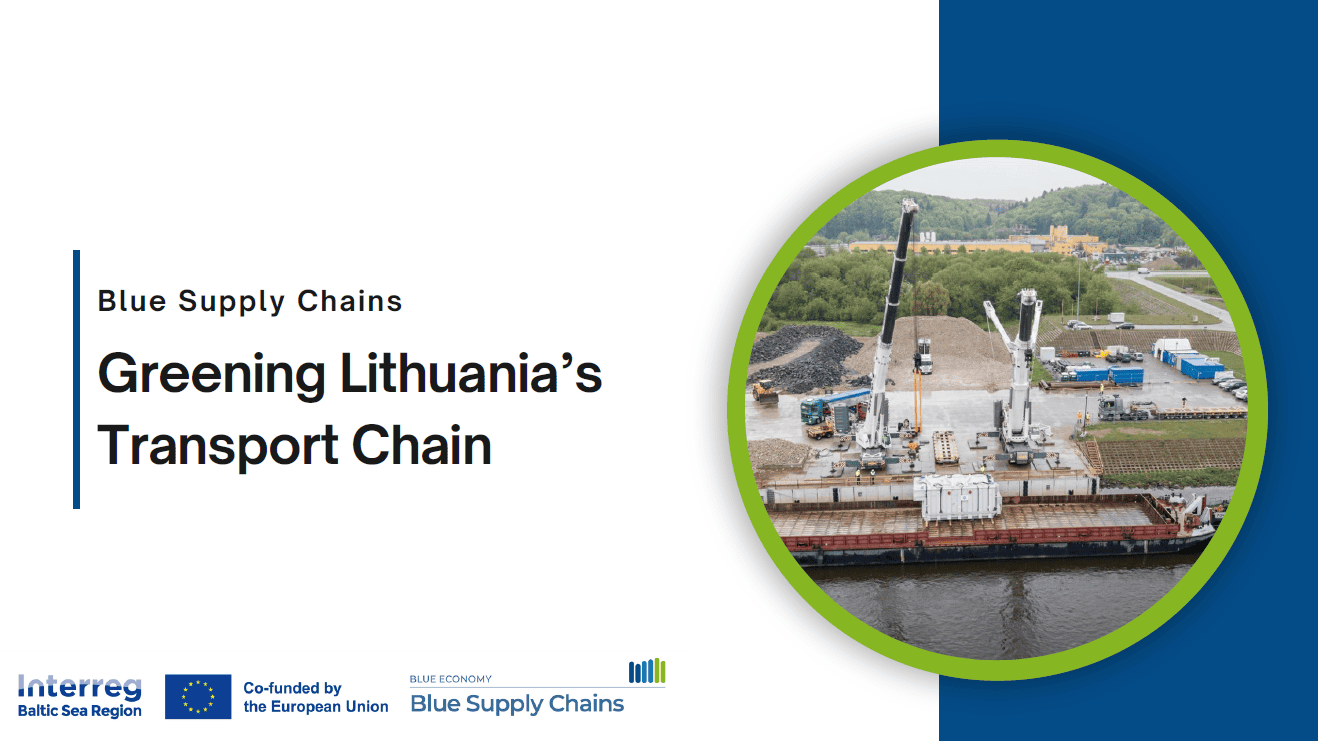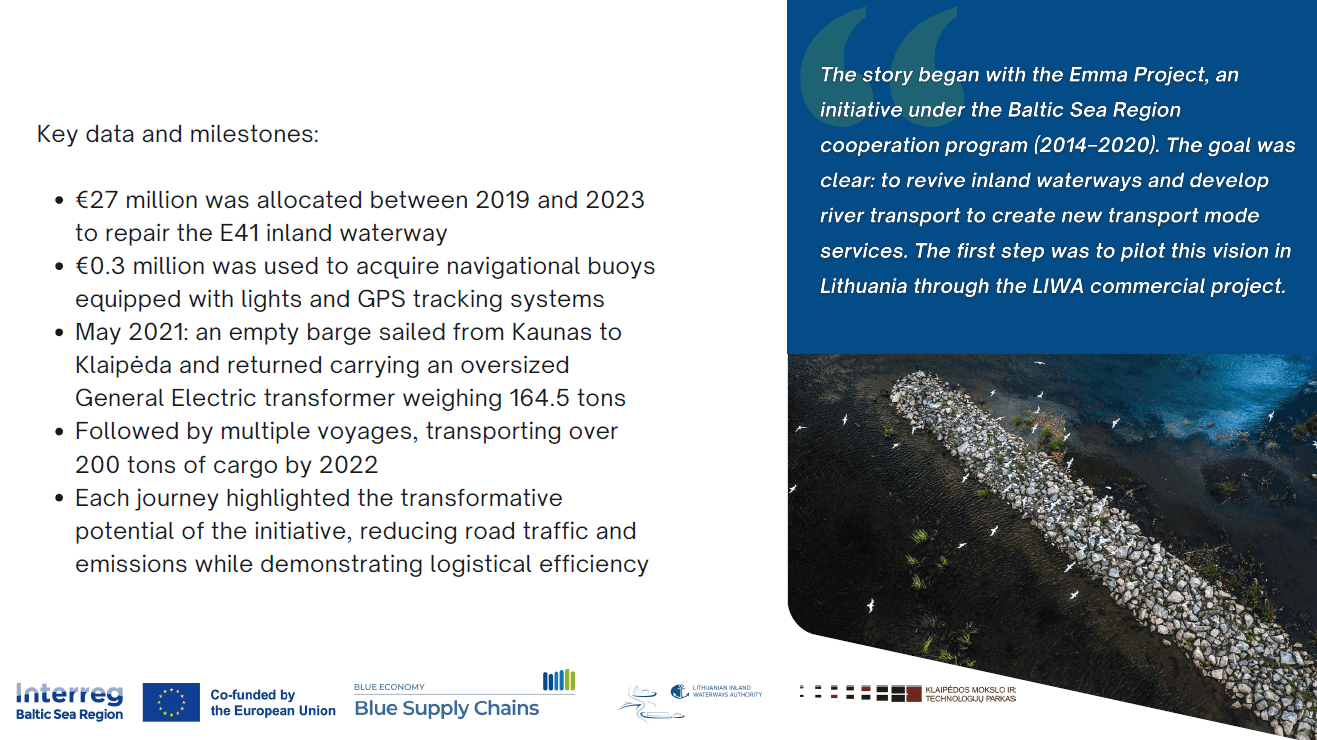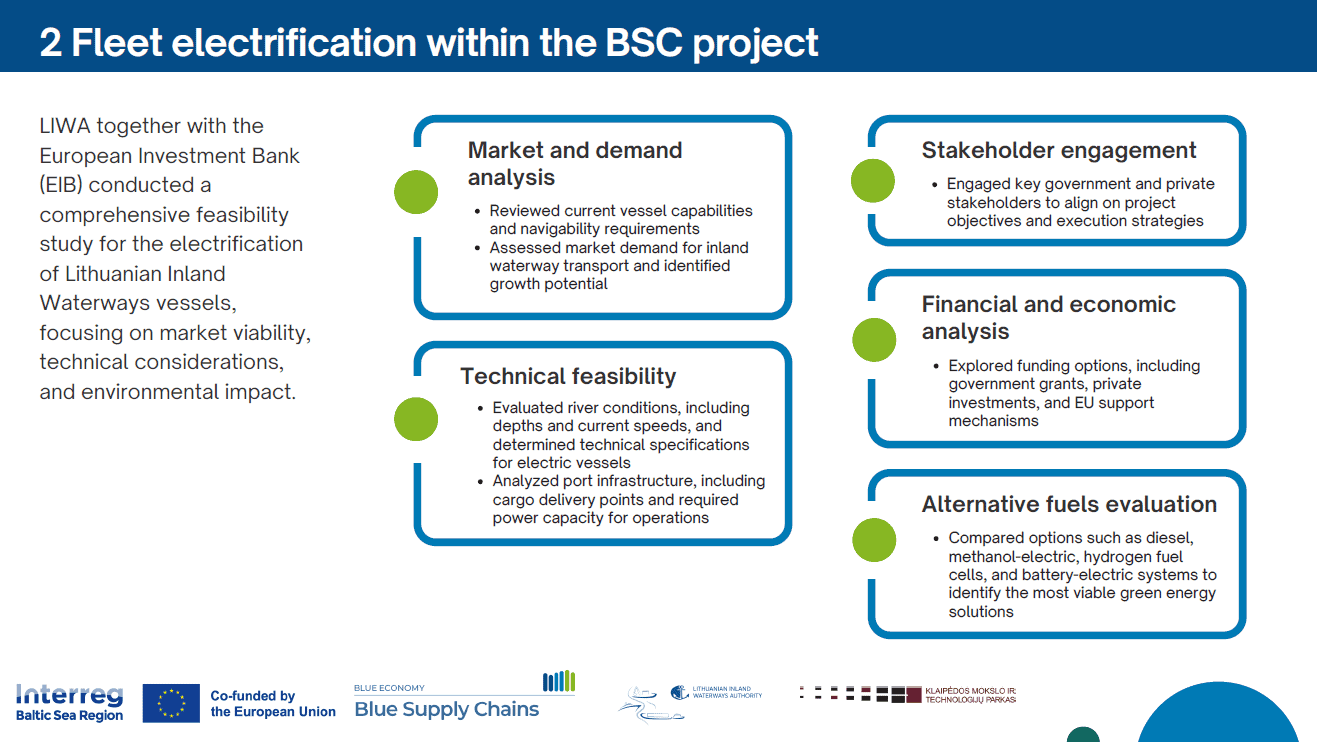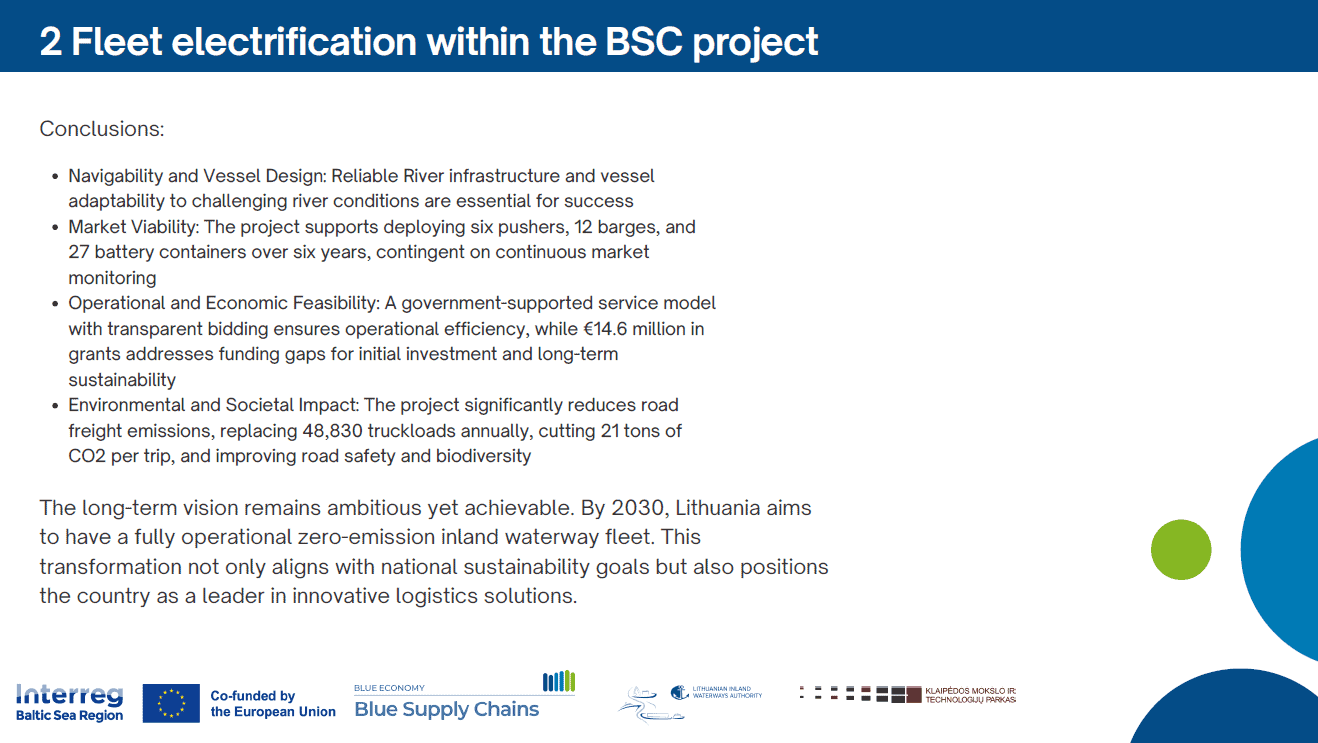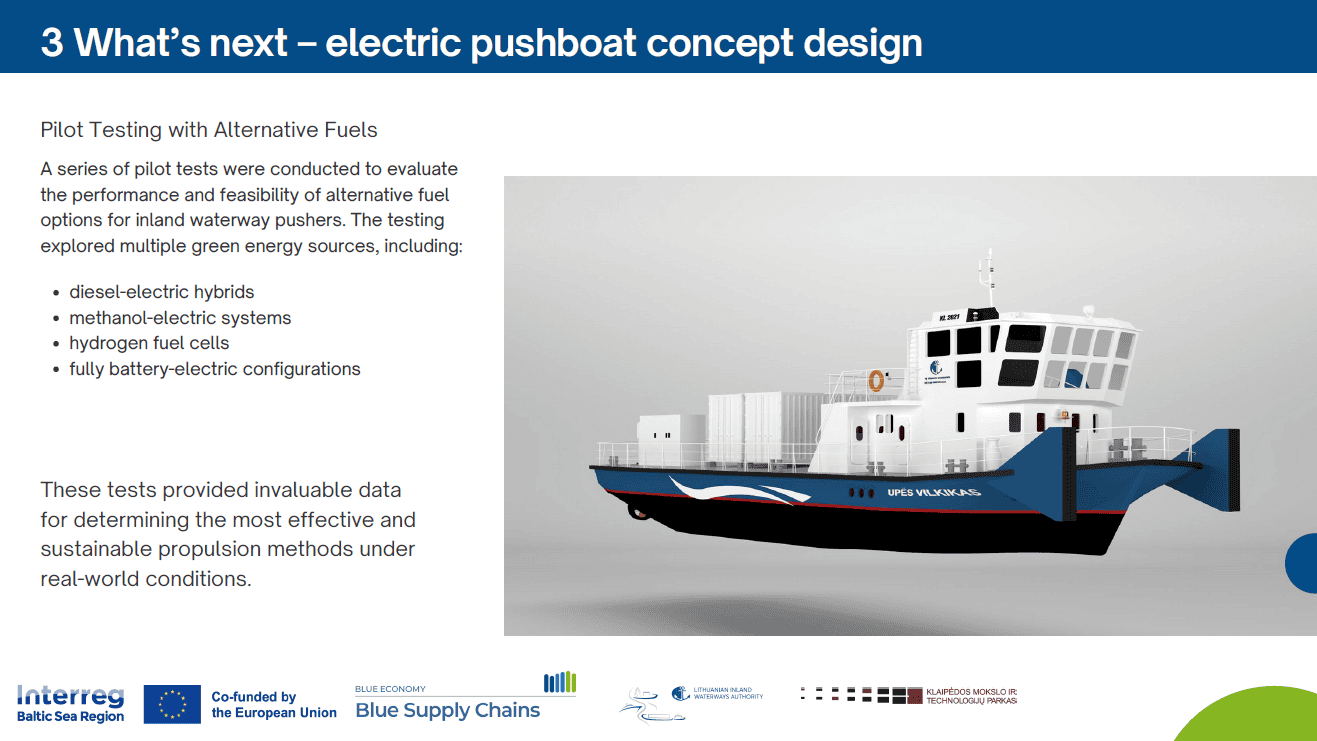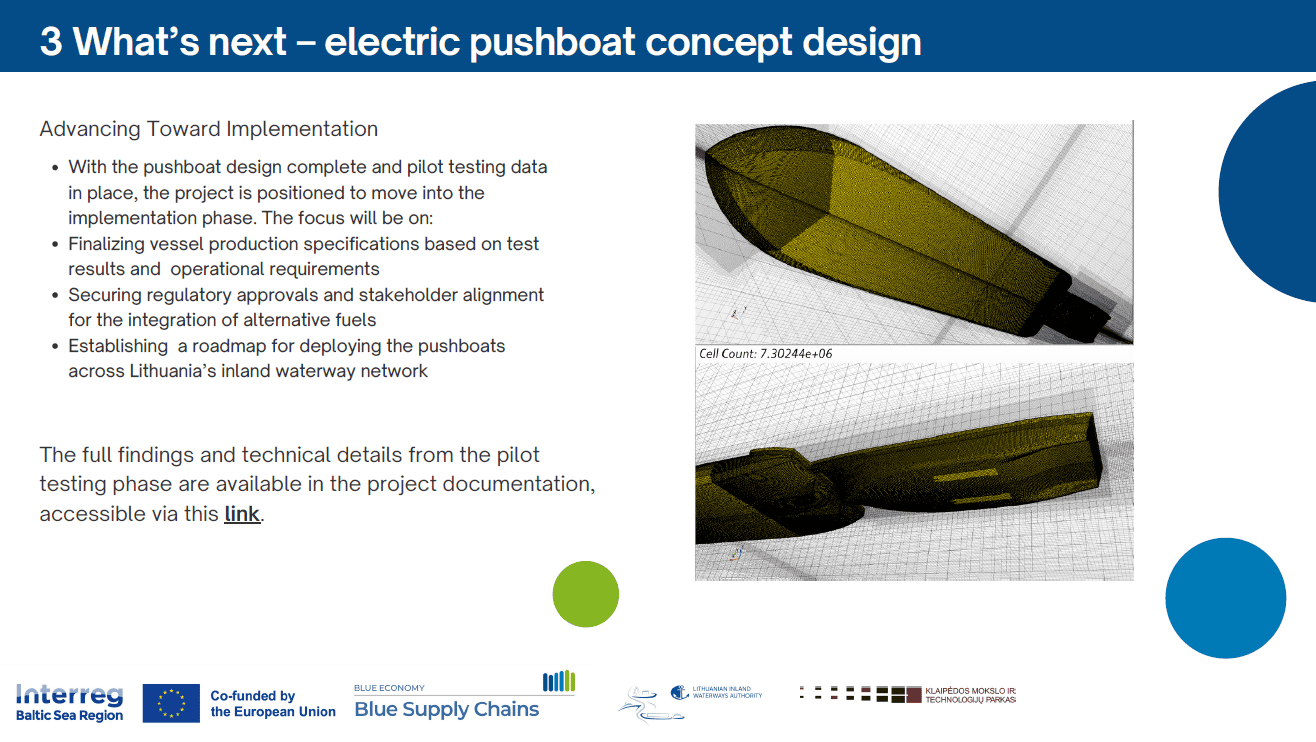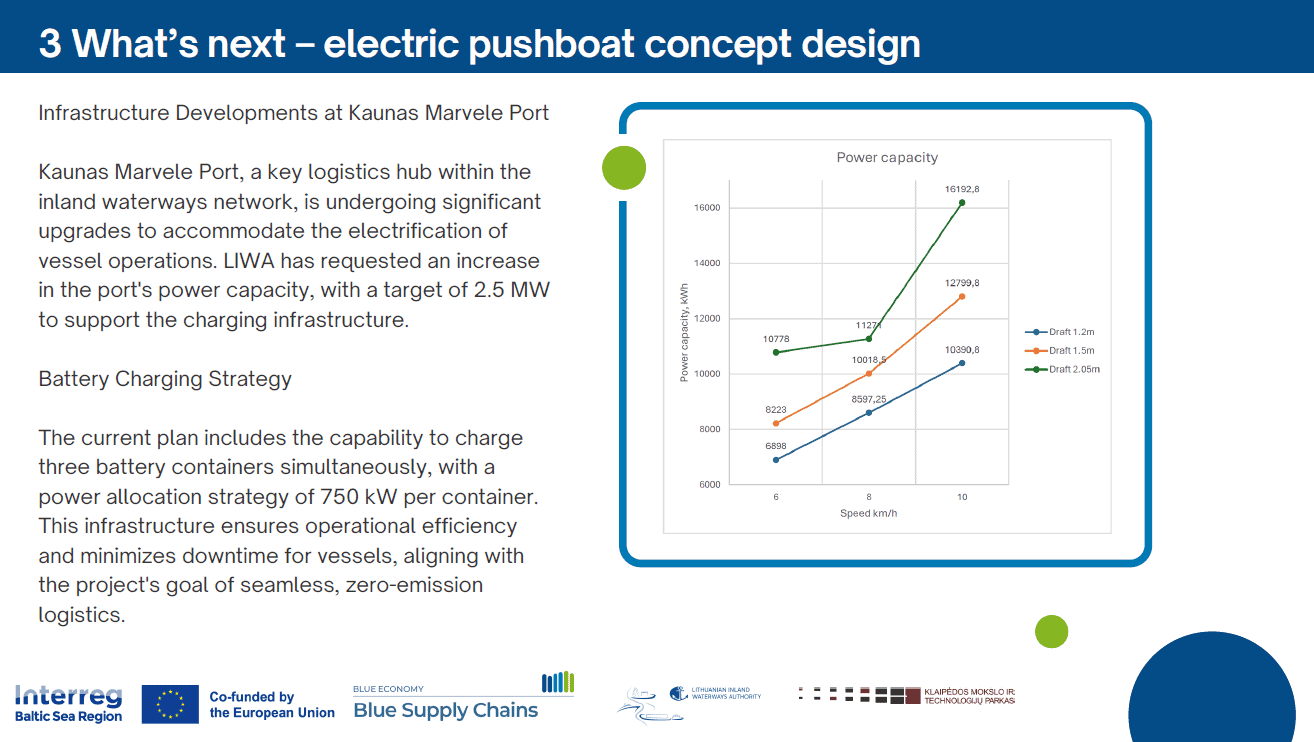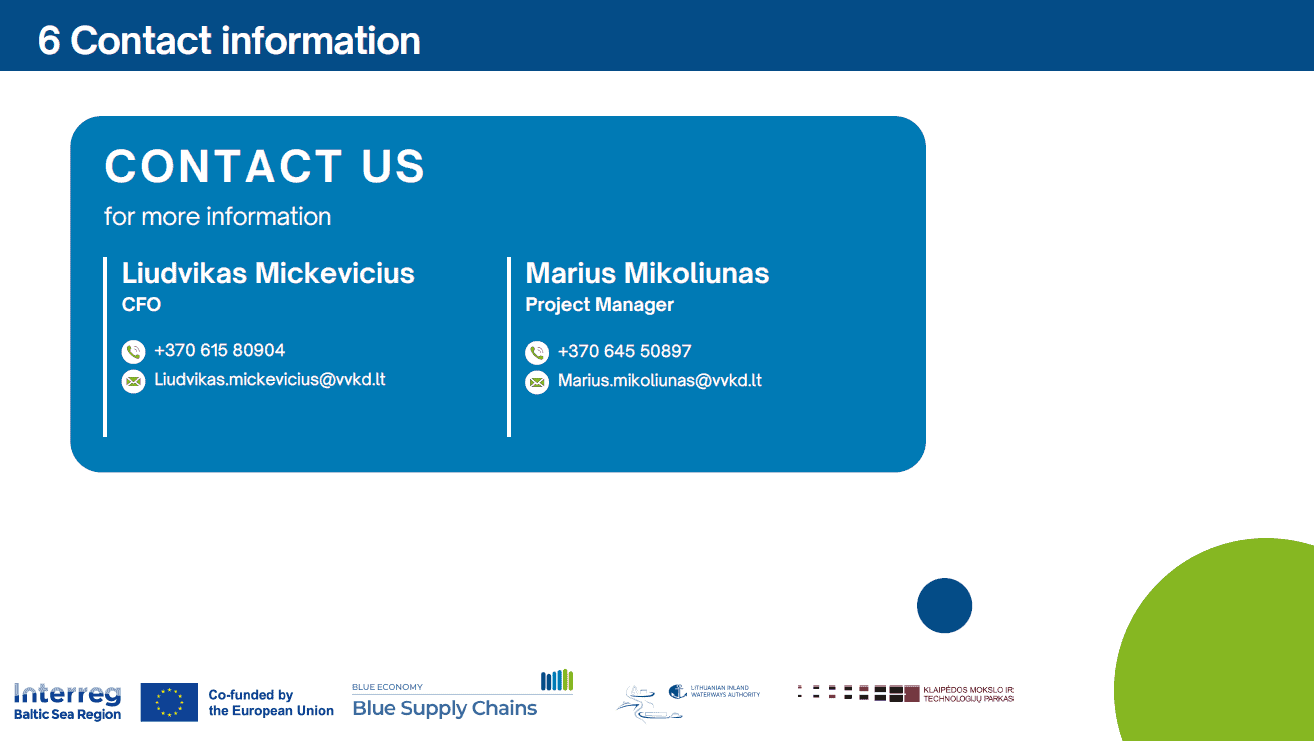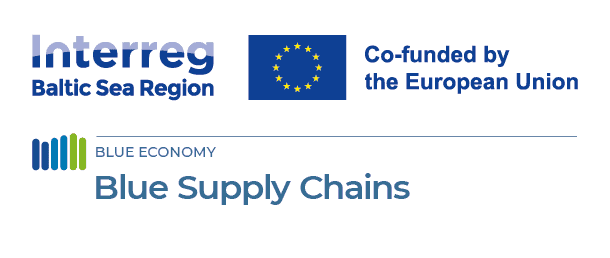
Greening Supply Chains - Emission Free Inland Waterways
05 June 2024
The Lithuanian pilot case investigates in Europes first emission free inland waterway connecting the seaport of Klaipeda with its hinterlandThe pilot area stretches from Lithuanian sea port Klaipeda inland towards the ports of Jurbarkas and Kaunas Marvelė.
This landmark project, a collaborative effort of Lithuanian Inland Waterway Authority and Klaipeda Science and Technology Park, aims to transform an existing waterway into a model of sustainability and innovation. This pilot project is not just a testbed for modern technologies but also a source of valuable insights for the entire EU and Baltic Sea Region. It addresses key operational questions, such as the optimal distribution of charging points, the specifications of charging stations, and real-world data on energy consumption in various navigational conditions.
The project explores the potential of alternative fuels, with electricity at the forefront. However, this path is not without obstacles, notably the high initial cost and limited energy density of batteries, which restrict the range of electric vessels. In response, Lithuanian Inland Waterway Authority participates in vessel design, particularly for shallow water navigation, and will engage in a pilot project to evaluate and validate electric technology under real sailing conditions. This includes a detailed analysis of energy consumption in different water levels and vessel speeds, essential for determining the strategic placement of charging stations.
In parallel, Klaipeda Science and Technology Park is making significant strides by developing a modular propulsion system, potentially revolutionizing the concept of emission-free inland water vessels. This system is designed to be universal, adaptable to any vessel within the EU and potentially beyond, and capable of utilizing various power sources, including batteries or alternative fuels like hydrogen or ammonia. A crucial aspect of Klaipeda Science and Technology Park’s approach involves a collaborative strategy between shipyards and ship owners, focusing on the practical application and testing of modular, containerized solutions.
Technical study on vessel design for zero-emission inland navigation corridor
The pusher’s design was based on electric propulsion, utilizing batteries as the power source, with the assumption that two battery containers would suffice for a complete journey. These batteries, housed in shipping containers, were to be changed only at Klaipeda and Kaunas.
The dimensions of the pusher and barge were specified as 27.8×9.2×1.24 meters and 74.4×15.85×2.05 meters, respectively. The design initially assumed battery containers of 1.5 MWh, but it was noted that ZES containers could provide a higher capacity of 2.7 MWh.
Concordia Damen was commissioned to review this design. Their analysis highlighted a significant issue: the pusher-barge combination might not complete the upstream journey on two battery loads due to the higher energy requirement for upstream travel which takes an estimated 2-3 times more energy than downstream. Also, sailing conditions are not easy: the distance between Klaipeda and Kaunas is about 260 km and currents can reach 1 m/s. This was escalated by the increase in resistance at higher sailing speeds, leading to a disproportionate rise in required power and energy consumption.
An analysis of the sailing route from Rotterdam to Duisburg, comparable to the Nemunas route, indicated that the energy requirements at different sailing speeds were significantly higher than anticipated.
- At a vessel speed of 8 km/h upstream, 17 MWh is required, corresponding to 7 ZES battery containers in case of battery electric propulsion.
- A vessel speed of 10 km/h upstream requires 20 MWh, corresponding to 8 ZES battery containers in case of battery electric propulsion.
The primary conclusion from this review was that the initial design was not feasible for electrical sailing on the Nemunas River. Even with higher capacity ZES battery containers, the number of containers required for a single upstream voyage was impractically high (8 to 12), mainly due to the high resistance of the convoy. The design of the flat barge, akin to a pontoon, was deemed suboptimal for energy efficiency.
Lithuanian Inland Waterway Authority has done the optimization phase of the preliminary design focused on enhancing energy efficiency and adaptability of the barge to different cargo types, such as containers and bulk. A significant aspect of this optimization was the assumption that by reducing the sailing speed to 8 km/h in the upstream direction, there would be a 25% energy saving. This reduction in energy consumption is attributed to the proposed use of narrower barges, which would decrease the sailing resistance of the convoy.
The specific energy requirements for the journey from Klaipeda to Kaunas, at the optimized speed of 8 km/h upstream, were calculated to be 13 MWh. This translates to a need for five ZES battery containers. However, the design aimed to further reduce this requirement. By introducing a stopover and battery change at Jurbarkas, the number of battery containers needed on the pusher could be lowered to three, making the concept more viable.
This approach not only reflects a significant improvement in the energy efficiency of the vessel but also demonstrates a practical solution to the challenge of battery capacity and vessel autonomy. The optimization phase, therefore, marks a crucial step towards the financial feasibility of the project, with considerations for operational practicality and energy consumption at its core. The adaptation of the barge design to reduce resistance and the strategic use of battery changeovers are key factors in achieving a more efficient and feasible vessel design for this specific route.
Identification of necessary infrastructure measures
The investment in electric pushers, barges, and battery containers is a significant step towards modernizing and greening marine transportation.
The detailed approach to port infrastructure, with specific attention to Jurbarkas, indicates a thorough understanding of the logistical and operational needs of the service. The proactive measures for cargo handling and battery management through the allocation of cranes and charging points demonstrate foresight in ensuring operational efficiency.
However, the investment in infrastructure, particularly the grid expansion at Jurbarkas, suggests a considerable upfront cost. It’s essential to balance these costs with long-term operational savings and environmental benefits. Also, the assumptions regarding the shared responsibility of grid expansion costs with the grid operator should be confirmed to avoid any financial discrepancies. Following a summary of required investments and facilities:
Port Infrastructure Investment
- Existing Facilities: Klaipeda and Kaunas Marvele ports have quays and mooring facilities suitable for 110 m ships.
- Upgrades Required: Jurbarkas requires significant development, including quays, mooring facilities, cargo storage areas, and charging stations.
Charging Points and Cranes
- Charging points: Three needed, one each at Klaipeda, Jurbarkas, and Kaunas
- Cranes: additional cranes are necessary for managing freight and switching battery containers
- Electricity Grid Connection for Klaipeda and Kaunas Marvele port as well as a ggid expansion at Jurbarkas
Next Steps
Lithuanian Inland Waterway Authority intends to pilot the project of electric ships on the Nemunas River. Initially, simulations will be conducted to determine the precise technical specifications required for the vessels. Lithuanian Inland Waterway Authority will collaborate with state energy companies to identify the necessary technical solutions for constructing the electrical infrastructure in the ports, enabling the charging of the vessels. Following this, a new public tender will be issued for the construction of an electric ship, ready to operate on the inland waterway.
Download our reports for more details:
https://interreg-baltic.eu/wp-content/uploads/2024/08/D1.2-Role-of-Port-Authorities-in-green-energy-supply-for-transports-chains.pdf
